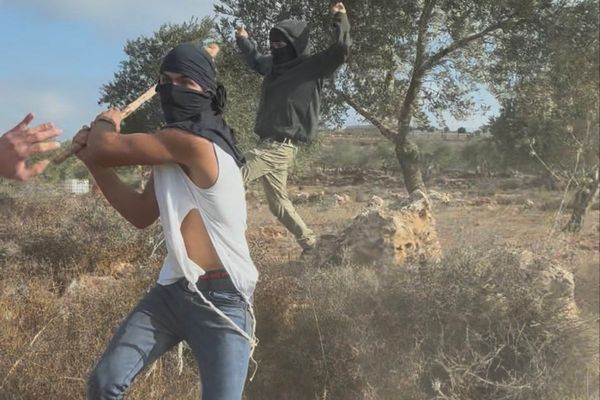Last week, trustees from the Toronto District School Board voted in favour of replacing the mandatory Grade 11 English course with a course about understanding contemporary First Nations, Métis and Inuit Voices called First Voices.
This comes as welcome news. Since Canada’s Truth and Reconciliation Commission (TRC) released its final report in 2015 and called for reconciliation education, the Ontario government has been lagging on prioritizing this.
As an Indigenous scholar who belongs to the Kanien’kehá:ka Nation, and teaches courses on Indigenous literatures, I am delighted students will be exposed to texts that are unapologetically Indigenous and carry readers forward on a powerful journey of both reconciliation and resurgence.
I also know that for these new courses to be successful, commitments to funding and resourcing teacher training and professional development are a must.
So are commitments to redressing a deep history of structural and colonial violence in education throughout all levels of schooling.
About First Voices
First Voices is among courses that have been developed to respond to the TRC’s call urging ministries of education to develop and implement K-12 curricula on Indigenous history and the legacy of the residential school system in Canada (Call No. 63).
Several Ontario school boards have already rolled out First Voices. The course replaces the mandatory Grade 11 English course and the study of texts written by authors such as William Shakespeare and F. Scott Fitzgerald for the works of Indigenous authors such as Tanya Talaga, Lee Maracle, Katherena Vermette, Cherie Dimaline and Richard Wagamese.
The beautiful storyline presented in Katherena Vermette’s The Break, and the timeless work of Lee Maracle’s Ravensong are the very texts that will support students on their journey toward truth and reconciliation.
So will engaging with the contemporary realities eloquently expressed in Eden Robinson’s Son of a Trickster. This book connects past-present-future continuums in a literary genre that literature scholar Daniel Heath Justice refers to as Wonderworks.
Much investment and work needed
It’s critical to understand that Call 63 is not just about developing new courses but “building student capacity for intercultural understanding, empathy and mutual respect” and “identifying teacher-training needs relating to the above.”
This suggests the need for a multi-tiered approach that includes Indigenous community consultations and professional learning opportunities.
With the federal government’s failure to launch a national strategy to implement reconciliation education, quality Indigenous education and effective responses to the national calls for Call 63 rest within the social and political will of each province.
The 2020 and 2021 Yellowhead Institute Accountability Reports on Canada’s progress towards satisfying the TRC’s Calls to Action document superficial commitments to truth and reconciliation. As I expressed in an interview for the 2020 report, the effective rollout of newly developed Indigenous courses requires a “structured and effective network that seamlessly connects education for reconciliation in teacher education programs, with ministries of education and school boards.”
Among those who will teach the First Voices course are teachers who recently completed an Indigenous literatures course I developed and teach at the University of Toronto.
In this graduate course, teachers read some of the texts that will be taught in First Voices. They learn about the importance of teaching through frameworks that centre cultural identity and community narratives of strength, and what Indigenous literary scholar Gerald Vizenor refers to as survivance. Survivance is about more than survival: It encompasses an active sense of presence merging both survival and resistance.
Read more: Indigenous communities come together virtually during coronavirus despite barriers and inequities
Designing more courses
As increasing numbers of school boards institute mandatory Indigenous courses, it is vital to ensure they are carefully designed.
They must also be delivered in ways that attend to anti-racist teaching practices that acknowledge varied experiences of racism in a settler colonial society, and be concerned with liberatory thinking, reflection and action as well as cultural safety.
Read more: Why critical race theory should inform schools
Indigenous cultural safety can be described as environments where individuals feel respected, safe and free to express their cultural identities without shame and discrimination.
With this context in mind, the new courses have the power to disrupt settler colonial narratives and promote cultural safety within classroom environments.
Teaching through an anti-colonial lens that counters colonialism and supports ethical dialogue requires Indigenous cultural safety and ethical commitments to be at the heart of the new First Voices course.
Redressing violence
While the First Voices course is an important step, we need to see this kind of commitment threaded throughout primary, junior and intermediate courses as well.
Read more: Reckoning with the history of public schooling and settler colonialism
By the time students get to Grade 11, they have already been exposed to years of colonial discourse and insensitive content about Indigenous Peoples.
This is true even of recently updated textbooks that cover the residential school system in Canada.
Change in cultural climate
When I first developed a love for Indigenous literatures as a graduate student and was inspired to develop and teach my first Indigenous women’s literature course over 10 years ago, such courses were unpopular. I recall many students being unaware of the human rights abuses that were a core theme threading the texts we read.
A strong focus of my course was on racialized, sexualized and gender-based violence against Indigenous women, girls, trans and Two Spirit peoples.
I encouraged students to engage in reflective practice, and make important societal connections..
Today when I teach these courses, students are more familiar with the genocidal history of this land. For this reason, I take a teaching approach that calls them to action.
I encourage students to understand the stories by Indigenous authors through noticing strength and community resurgence and connecting the texts to what is happening in their communities outside the classroom. I also encourage students to allow their reading to inform how they hold social structures accountable for injustices, and to resist seeing the texts through a “deficit” lens.
Indigenous-authored texts
Ten years ago, I could not find Indigenous-authored texts in most bookstores and certainly did not see them reflected in K-12 curricula or post-secondary syllabi.
Today, I can walk into a bookstore, the gift store at an airport or the local drug store or supermarket and immediately see beautiful artwork adorning the covers of Indigenous-authored texts.
Through an ethical and anti-racist engagement with First Voices, I am confident students will make necessary connections to the world around us as the contemporary realities threaded throughout the novels support students in developing their own sense of justice, of belonging and connections to this land.
Jennifer Brant receives funding from SSHRC and the Spencer Foundation.
This article was originally published on The Conversation. Read the original article.







